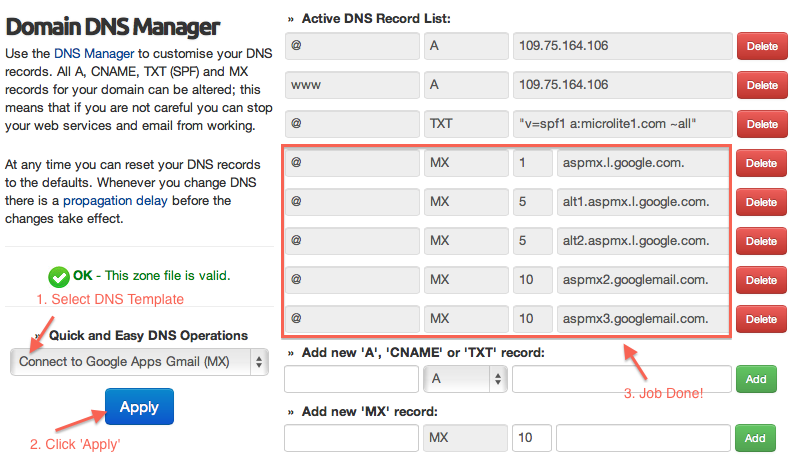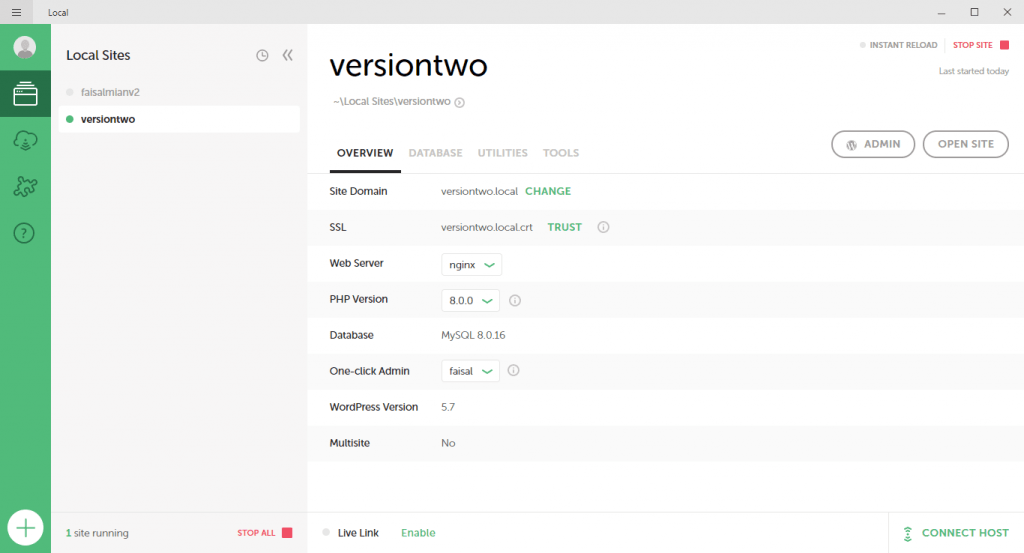

- #Local by flywheel demo domain update
- #Local by flywheel demo domain upgrade
- #Local by flywheel demo domain code
Now follow the workflow I mentioned at the start of the article. If you have followed this far, I hope you have a working setup. Trust SSL certificate in Local Link to Adminer and port information in the Database tab (Port for mysql can be noted from the Database tab in Local.) Search and replace links to production website with Local website in the database.Local provides Adminer in the Database tab to make this easy. Import website database to Local database.Trust certificate for the website from Local.Local creates this file in the \app\public\ folder. (Usually I have to add local-phpinfo.php in it. Ignore Local only files with \app\public\.git\info\exclude file.Refer the wp-config.php that was kept in step 2 for the values.) (Usual values for Local are local, root, root, localhost respectively.
#Local by flywheel demo domain update
Then update D B_NAME, DB_NAME, DB_PASSWORD and DB_HOST.
Add wp-config.php from your server manually. Use WordPress in a folder logic (without URL change) and configure. Using GitHub desktop, checkout the repository into \app\public\. Listable is a listing directory WordPress theme that helps you create, manage, and monetize a local or global directory site. After Local completes it’s install, delete all WordPress files in \app\public\. Make sure the domain is what you want ( for example). Next step is to create a repository on the laptop so that development can happen on the local machine. Now we have a Git repository on the server which is synced with. Setting up local working environment on Local git remote add origin (replace this of course). I will browse to /var/www/html/ folder and run the following commands ( reference): gitignore created, I will proceed with creating a Git repository. You will get this by clicking the “Download” button (You can create a personal access token if you prefer to use that instead of your password)Ĭopy the web url of the repository. Fill out the domain information: Enter the URL in the Domain field. From the site’s Overview tab, click the (+) icon in the Domains list to add the domain you’d like to point to Flywheel. This means that Git will ask for authentication when pushing to the repository. Add the domain to your Flywheel site and note the IP address. # I have a different process to export a copy of the database elsewhere. 
# This is where the scheduled database backups reside. # This allows me to have a separate wp-config.php on my local.
#Local by flywheel demo domain upgrade
gitignore typically looks like for me: # WordPress upload and upgrade folders are not version controlled This file resides in the /var/This is what. gitignore file before the first commit (to avoid a lot of pain, trust me).
On the server, the vhost file points to /var/Setting up. Once the repository is initiated /var/folder and a folder that contains all WordPress files. This will make sure that /.git is not accessible publicly. I like to create the Git repository just above the WordPress root directory. If Git is not present, follow the instructions here. Your webserver might already have Git installed. Visit the website backend so that any database updates can happen. #Local by flywheel demo domain code
Usually a private repository hosts the website code including plugins, themes and WordPress core.
Once all the changes are ready and any tests are complete, commit it using GitHub desktop to. Work on the website and make any changes like plugin updates or WordPress updates. I am not claiming that this is the best way for everyone. Unless a project is some really huge-profiled one, I suppose that kind of obscurity and security are acceptable (weighing all the pros and cons of local vs online development for my use case).This is a documentation of how I manage my WordPress websites using Git, GitHub and Local (by Flywheel / WP Engine). I also use a silly domain (some-string.some-tld), with a silly subdomain (-tld). Rebranded - I fixed the link, but didn't edit every mention in the article.Īs for the exposure - I use HTTPS and SSH for most work, uploads, downloads etc. Anyway, if localwp continues to disappoint, I'll just revert to what I did before (dev environment on a local subdomain). Still, I thought having a local wp dev environment could be beneficial as to not expose the site to the internet immediately (although, I know there's pw protected and similar solutions for this). Actually, Flywheel local (the one you mentioned) is LocalWP today. I only recently thought about trying a local approach before and LocalWP came to mind (since I remembered that one). Setup any demo/dev sites under a dev subdomain on my Reseller/Shared Hosting and just work from wherever I am. Technically, I was following the same practice like you before. Once it's all good, I clone it to the domain where it is supposed to be.įor local stuff, I used to use Local by Flywheel - but haven't used that for well over a year. 
It makes it easier for me to work on the site wherever I am, it makes it easier to collaborate, and I can see how it works on a hosting server right away. I don't develop new sites on a regular basis - so keep that in mind.







 0 kommentar(er)
0 kommentar(er)
